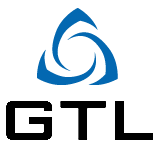Propulsion
SSE™-Superior Stability Engine
Historically, a lack of understanding about combustion instability has driven development efforts to design rocket engines for performance and then try to “fix” combustion instability issues with iterative testing. This greatly increases development cost and risk. In contrast, the Superior Stability Engine was designed with a high stability margin, using the insight provided by the UCDS Process, while also achieving high performance.
Within a phase II SBIR effort with NASA-GRC, GTL developed the concept for the SSE. In a $2.8M AF-SMC effort, GTL designed, built and test fired the 5klbf vacuum thrust, LOX/LCH4 SSE. Pulse testing was performed on the engine to confirm engine stability. The test was successful, and the engine showed excellent stability properties as predicted while also achieving high performance.

PA-E Engines
In the mid-1990’s, GTL (as PacAstro) developed the PA-E15k liquid rocket engine. This 15,000 lbf thrust LOX/RP-1 rocket engine was test fired 80 times at EAFB, demonstrating stable operation and high performance. A higher thrust version, PA-E30k, was designed and fabricated.
Propulsion Components
In addition to rocket engines and propellant tanks, GTL is developing a variety of rocket propulsion system components. These components include high-performance cryogenic valves and propellant lines.
GTL’s ultra-light BHL composite transfer lines have been shown to reduce chill-down time over 90% compared to equivalent stainless steel lines. BHL tubes have ¼ the mass of comparable systems, and 5-10 times less thermal mass. These benefits are also applicable to BHL tanks. The use of BHL in cryogenic storage and transfer systems will significantly reduce propellant required for pre-chilling lines or tanks, which will reduce waste propellant 5-10 fold. Furthermore, the reduced thermal mass will allow for easier no-vent filling as the system can chill down far easier. This will open up the operational envelope of cryogenic systems in space, improving the efficiency of a cryogenic propellant economy.
Pressurization Systems
GTL has developed and tested helium and non-helium pressurization systems for liquid rocket vehicles. GTL’s non-helium pressurization system provides 67% system mass reduction and 90% volume reduction compared to equivalent helium-based pressurization systems. This technology has been tested and has achieved TRL 5/6.

![GTL-logo-2color-[white] Gloyer-Taylor Laboratories, Inc.](https://i0.wp.com/www.gtlcompany.com/wp-content/uploads/2018/10/GTL-logo-2color-white.png?fit=280%2C72&ssl=1)





